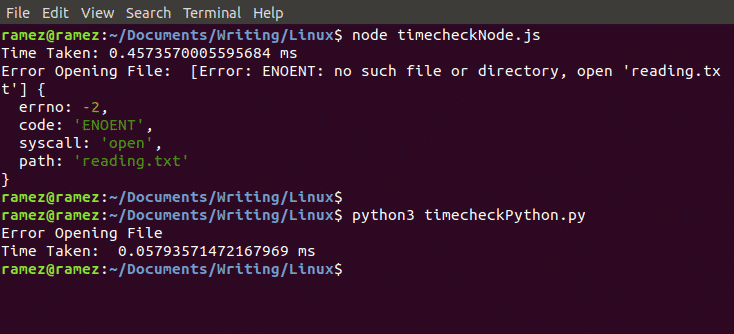With so many programming languages and frameworks to choose from, comparisons between them has become inevitable as you need to be aware which one offers the best services. When it comes to back-end development, Python and NodeJS both are among the most popular alternatives to choose from. Today we’ll be looking at their strengths and weaknesses and what really sets them apart from one another.
What is Python and NodeJS?
Before moving onto the specifics, let us first give an overview over what it is that we’re comparing.
Python is a fully-fledged high-level language that not only supports both functional and structured programming but also offers an excellent documentation for support, making it highly preferably for projects of machine learning and data science.
On the other hand, NodeJS is an open-source JavaScript run-time platform that is based on an event-driven model and due to its highly scalable nature, makes it an excellent choice for developing and executing back-end services called APIs (Advanced Programming Interfaces). Moreover, since it uses JavaScript as its core, it allows the usage of the same language in both the back end and front-end regions, solving some major compatibility issues.
Let us now finally look at some of their key differences in detail.
1- Performance
Performance is the speed at which your application responds and this in turn depends on how fast your code compiles and executes. In terms of performance, NodeJS has the edge over Python as it being based on Chrome’s powerful V8 engine, makes it one of the fastest server-based solutions.
This is also why it is preferred in developing chat-bots and real time applications. In order to verify this, we ran a loop ranging from 0 to five hundred thousand and took the sum of all the elements. Following were the results that we got:
As seen by the image above, NodeJS (0.01309 ms) was much faster than Python (0.07401 ms) in this example. Hence NodeJS is the winner in this round.
2- Scalability
Another important factor to compare between NodeJS and Python is Scalability. Scalability is the ability of an application to respond and serve all the incoming and outgoing requests while having no decline in its performance.
With regards to NodeJS and Python, NodeJS is certainly the more flexible as having an asynchronous architecture at its core enables it to handle thousands of concurrent requests without blocking any of them. Meaning multiple users can edit the same files, move tasks in boards and so on, all at the same time.
Python itself is pretty scalable as it uses its diverse set of libraries as well as coroutines, which allows it do asynchronous programming, to handle large data migrations. However, for very large systems, it becomes very complex and thus, Python loses out to NodeJS in this regard.
3- Syntax and Error Handling
If one does not have information about JavaScript beforehand, then Python might be easier to learn due to its concise and simple syntax which allows it produce certain functionality in fewer lines of code. Making use of indentation and skipping out on curly brackets, Python has made code readability very simple, which helps to facilitate coordination between team members working on a project as well as allows clients themselves to properly understand what is happening. Let us look at an example of reading from a file called sample.txt and printing its data.
As seen from the image above, the code in Python is much better to read and simple to understand in this example.
Another feature that Python excels at more than NodeJS is error handling. Python is known for dealing with errors in a more concise and easy manner and is much faster in debugging and fixing errors. Let us look at an example. In the following, we read a file called reading.txt and output its data. In case there is some error during file reading, then that error is printed onto the terminal.
Following is the output along with the run-time for both codes:
As seen by the output, Python (0.0579 ms) is clearly faster than NodeJS (0.457 ms) in detecting an error in this example.
4- More User Friendly
One of the best things that come along with both of Python and NodeJS is its excellent community. Both possess a large and active community that is highly supportive, open-source and has large number of developers. Python, being the older of the two, also has a large number of contributors and an incredible extensive library support, along with an excellent documentation.
Having such a rich native library is one of the biggest strengths of Python as it simplifies the entire process and allows developers to focus more on the logical side of problems. Moreover, it has an up-to-date documentation that is highly comprehensive and covers everything that one needs to know to be proficient in Python. This is where NodeJS is lacking in a bit as its documentation is underdeveloped and needs to significantly improve.
NodeJS or Python – Which to Choose?
Both Python and NodeJS have their own advantages and disadvantages and it is difficult to say which one of the two is better. Both cater to different needs and thus when making a choice over which to choose, it is important to consider the needs and requirements of your project and which one would be more suitable for your team. If one needs a fast, real time application that requires multiple connections working concurrently or heavy client-side rendering, then NodeJS would be the ideal choice. For data analysis and machine learning problems that involve deep learning and neural networks, Python, being consistent, stable and relatively easy to use, is a much better alternative. Both Python and NodeJS offer efficient solutions and are great choices to choose from for back-end development.
from Linux Hint https://ift.tt/2U8CtQB








0 Comments